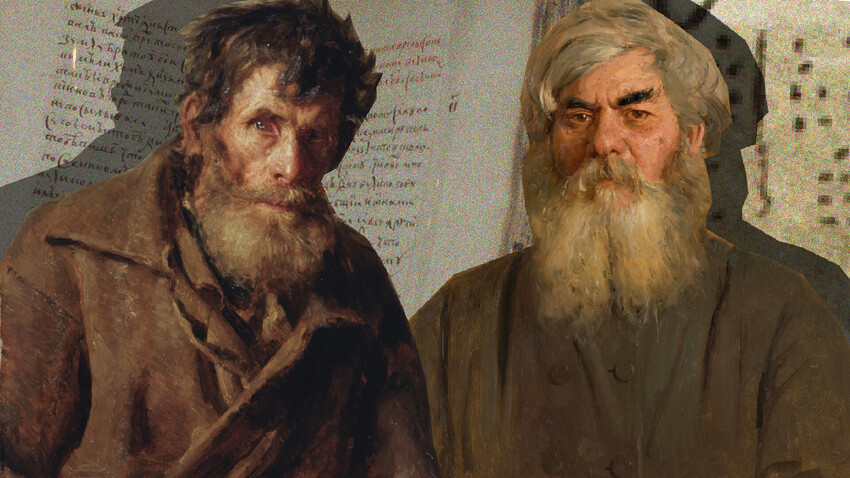
"A shy peasant" and "A man with an evil eye", portraits of peasants by Ilya Repin. This is how village healers and warlocks could look like
Russia Beyond (Tretyakov gallery; Nizhny Novgorod State Art Museum; Wikipedia / Shakko)The first list of forbidden books in Russia was a translation from Greek and appeared as part of Svyatoslav's ‘Izbornik’ (‘a collection of texts’) in the year 1073. It contained the names of 29 apocryphal texts, that is, "secret" Christian texts that distort or supplement various places in the Bible. However, they were not used as magic texts yet.
Starting from the 14th century, books that claimed they could be used to reveal the future and predict fate started to appear in Russia. All of them were banned by the ‘Stoglav’ Council of the Russian Orthodox Church in 1551. Most of these books have not survived – when discovered, they were usually burned as heretical. But, we know about their content from other sources.
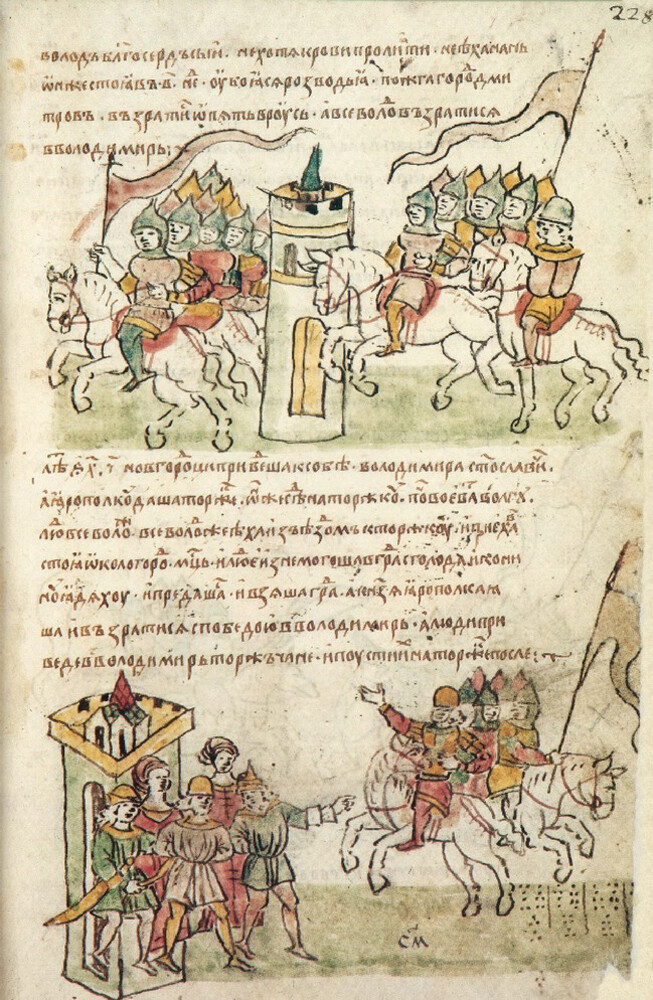
The page of the Radziwill chronicle with a part of calculation for 'Rafli' in the lower right corner
Public DomainThe most famous fortune-telling book was called ‘Rafli’. The name comes from the Arabic way of fortune-telling on the ground or sand – ‘raml’. To do the fortune-telling, it was necessary to put down 16 rows of dots without looking and then connect them according to the formula given in the book, getting different shapes. They had their own names, for example: ‘Path’, ‘Cathedral’, ‘Host’, ‘Youth’, ‘Howl’, ‘Scarlet’, ‘Head’, ‘Trunk’, etc.
The resulting divination scheme was called "judgment". It can be seen on the page of the Radziwill chronicle – apparently, the scribe was tired and decided to tell fortunes for the future.
In the very text of the book, the meanings of the shapes were explained, depending on which "house" they were in in the scheme. "Houses" were associated with phenomena and spheres of life: ‘Soul’, ‘Goods, money, servants’, ‘Brother, sister’, ‘Father’, ‘Son, daughter’, ‘Illness’ and others.
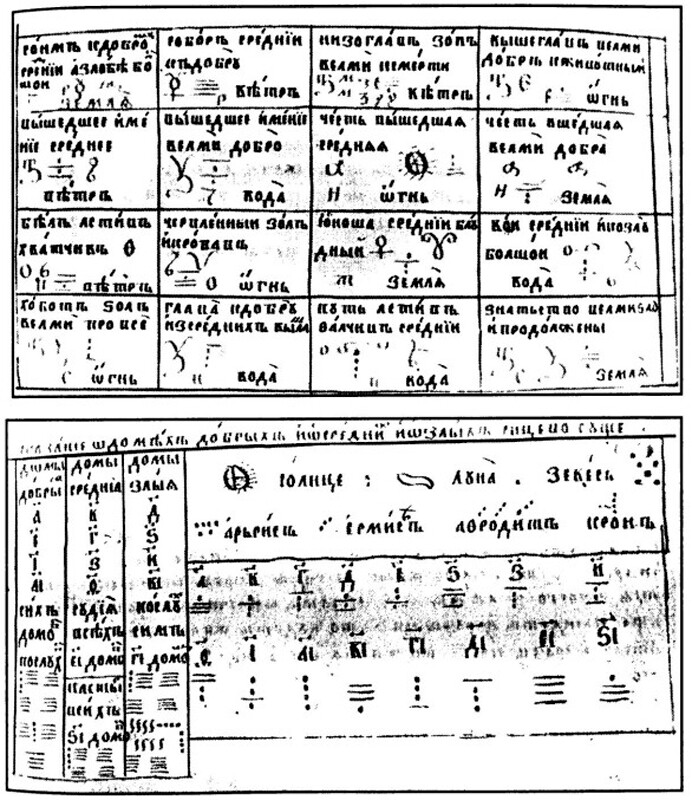
How 'Rafli' looked like in the 18th century
Archive photoRussians used to tell fortune with the ‘Rafli’ until the 18th century, despite all the prohibitions. In the 18th-19th centuries, complex fortune-telling became a thing of the past and ‘Rafli’ began to spread in the form of a large sheet with boxes, on which seeds or dice had to be thrown. There were explanations for the boxes on which the dice fell on: first, a text from a psalm or an incident from the Gospel and an appropriate interpretation.
This book was created in 1356 by a Jewish scholar named Immanuel ben Jacob Bonfils (1300-1377), who lived in the French city of Tarascon. The book was called ‘Wings of the Eagle’ or ‘Six Wings’ (an association with the six-winged seraphim). The book had six parts – astronomical tables with which it was possible to predict eclipses.
The book appeared in Russia in the 1470s. It was translated and adapted by another Jewish scholar named Zachary Scaria, who came to Novgorod from Kiev. In Russia, notoriety went about him: "He was the devil’s tool – he was trained in every villainous invention: witchcraft, black magic and astrology," theologian Iosif Volotsky once wrote about him. Sсaria translated the works of Jewish scientist Moses Maimonides into Russian and distributed them – he became the founder of the so-called ‘Heresy of the Judaizers’ in the second half of the 15th century.

A dice (L) and three chess pieces, 17th century. Such dice could be used for fortune telling as well
SputnikThe adherents of this heresy were so frightful for Russians, precisely because, with the help of the ‘Six Wings’, they could tell exactly when there would be a full moon, a new moon or the next eclipses of the Sun and Moon. Some contemporaries understood that ‘Six Wings’ was not a “magical treatise”, but simply astronomical tables. Archbishop Gennady of Novgorod wrote that "The Six Wings… is to astronomy, like a drop to the sea" and is intended for "stargazing pastime".
But, the book was banned anyway – superstitious and mostly illiterate Russian people thought that such abilities allowed the “Judaizers” to summon the devil themselves. They were feared, denounced by the princes; their books were taken away and burned and the "sorcerers" themselves were then executed.
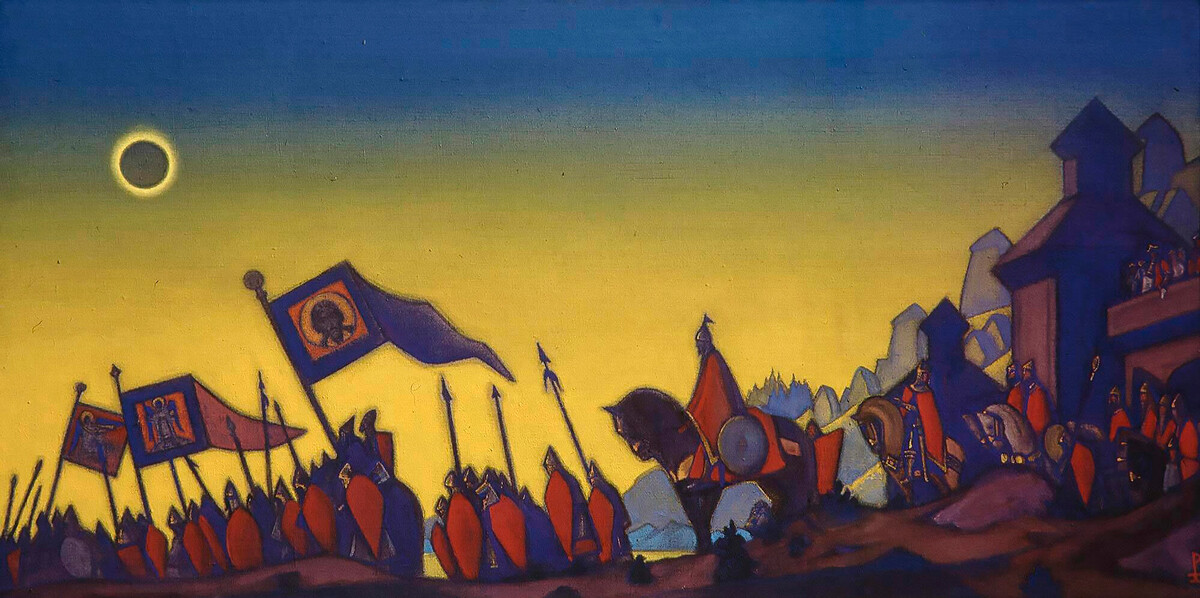
'Prince Igor's Campaign' by Nicholas Roerich, 1942
Russian MuseumNot a single copy of the complete ‘Volkhovnik’ is known to historians. It was a large collection of omens for all occasions. ‘Volkhovnik’ was divided into chapters, which were sometimes distributed as separate books. The chapters ‘Voronograi’ (‘Cries of crows’), ‘Kuroklik’ (‘Screams of chickens’), ‘Ptichnik’ (‘Bird book’) contained divinations on the cries and types of flights of different birds. ‘Snosudets’ is translated as ‘Judgement of dreams’, which it contained, while ‘Putnik’ (‘Wayfarer’) contained omens about meetings on the road. ‘Zeleynik’ (‘Herbalist’), meanwhile, contained divinations on herbs and methods of herbal treatment.
READ MORE: Bird omens popular in Russia
A very famous part of ‘Volkhovnik’ was ‘Trepetnik’ (‘Shiverer’) – omens on twitching and itching of body parts. Parts of its text have been passed down to us. "If the top of the head trembles, loot awaits." "If the eyelid of the left eye trembles, due sorrow awaits." In this form, there were signs indicated for almost all parts of the body. Ringing in the left ear portended "mental sorrow", twitching of the left shoulder – "to fight and get angry with friends or on the road" and so on.
An old omen that is still observed in Russia – if your ears are burning, then someone is "speaking badly about you" – probably came down from the ‘Trepetnik’.
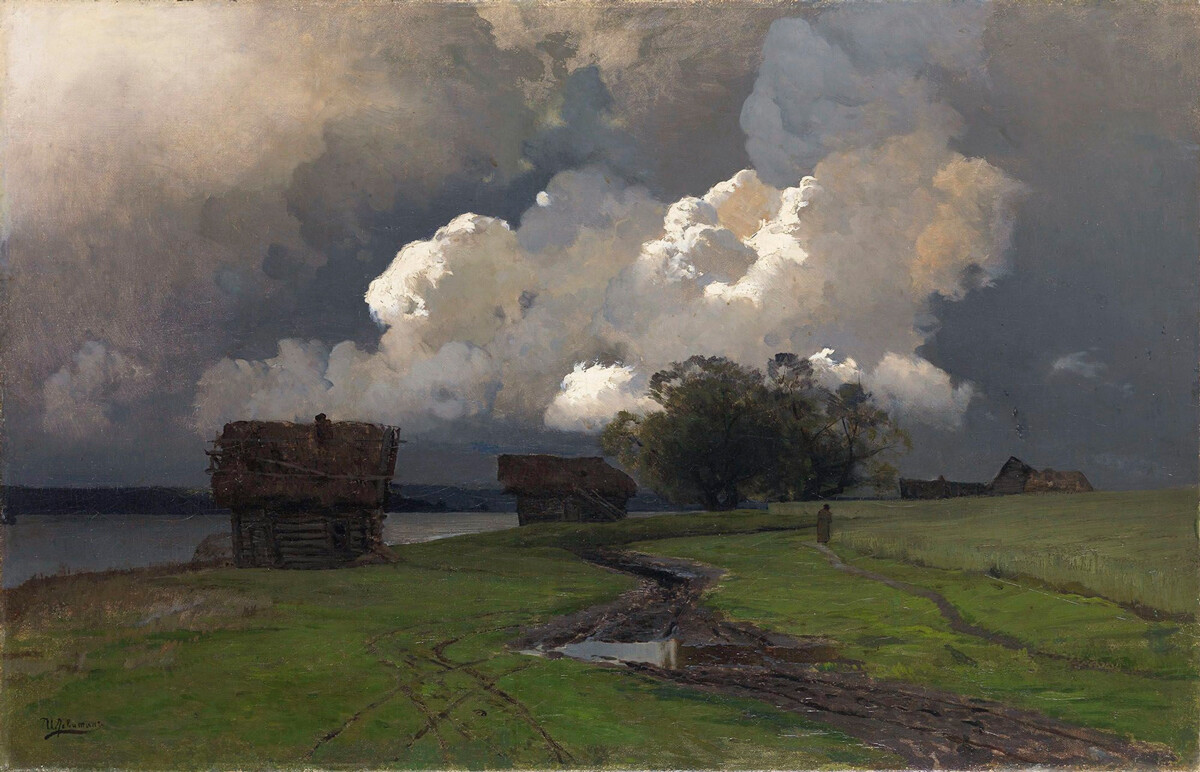
'In the vicinity of the Savvino-Storozhevsky monastery,' Isaac Levitan, 1880s
Pushkin State Museum of Fine Arts‘Thunderers’ were lists of thunderstorm-related omens that should come true if any of the months of the year were "surrounded" by thunderstorms, that is, severe thunderstorms with thunder and lightning occurred at the very beginning and very end of the month. ‘Thunderers’ explained how the behavior of livestock, crop yields, as well as massive natural disasters: epidemics, hurricanes, wars and drought could depend on this.
The following is the text of one of the Thunderers: "The month of March is surrounded – there will be a lot of water; the month of April is surrounded – a war will be; May – great war will be; June – death to livestock will be…” and so on.
The most mysterious of the "forbidden books", the "Charovnik", is known to us only by its description. There were 12 chapters in it, describing 12 "werewolf faces of beasts and birds". One of the indexes of "forbidden books" contains the beginning of the description of the first werewolf from ‘Charovnik’: "It keeps his body devoid of life and flies like an eagle, like a hawk, like a raven, like a woodpecker and an owl and seeks its prey as a fierce beast, like a wild boar, like a wolf, and flies like a dragon and walks like a lynx and a bear." However clumsy, this may be the only excerpt we have left from the original ‘Charovnik’.
If using any of Russia Beyond's content, partly or in full, always provide an active hyperlink to the original material.
Subscribe
to our newsletter!
Get the week's best stories straight to your inbox